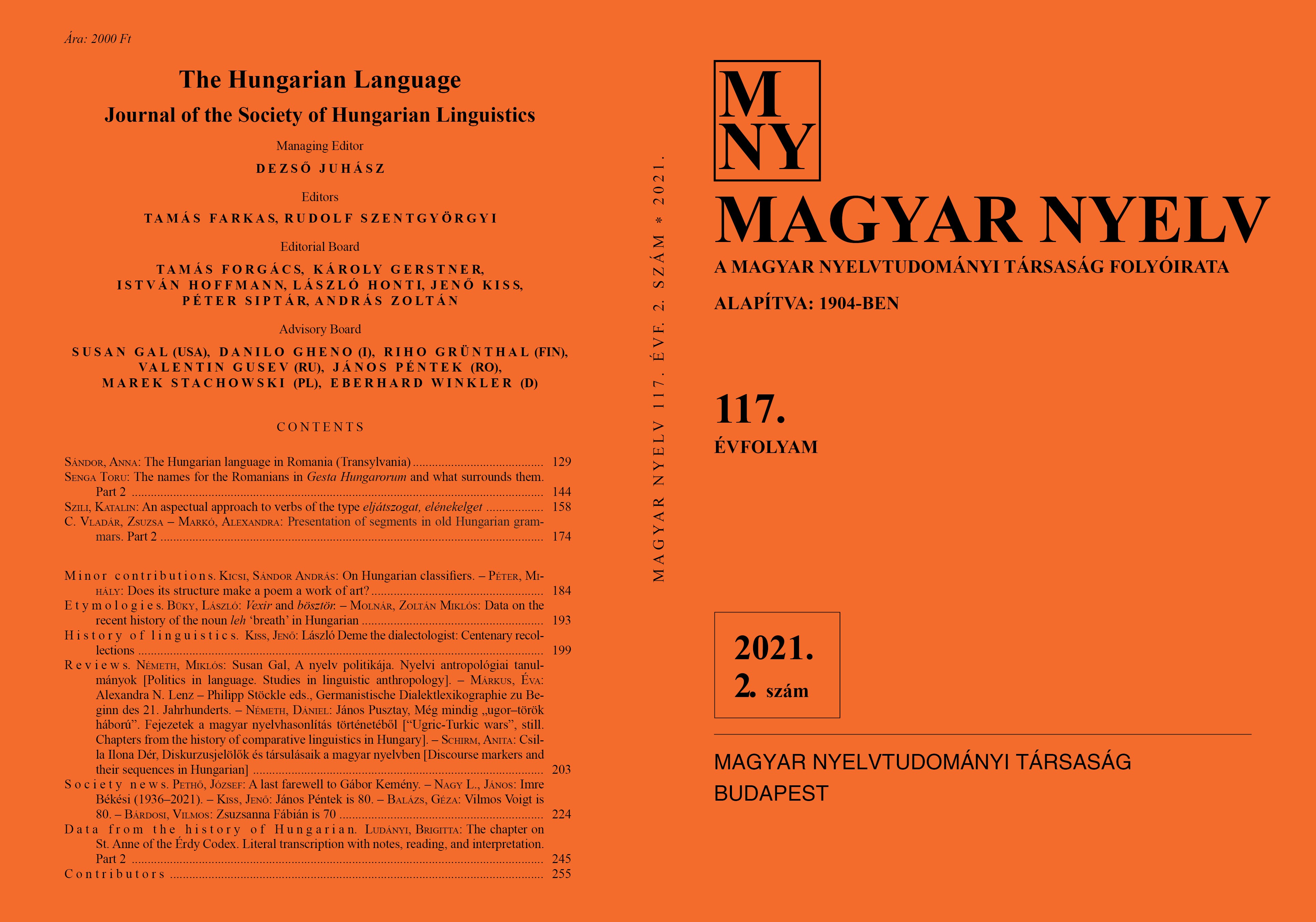The Hungarian language in Romania (Transylvania)
DOI:
https://doi.org/10.18349/MagyarNyelv.2021.2.129Keywords:
the situation of the Hungarian language in Romania (Transylvania), sociolinguistic research, minority language, language policy situation, the code set and bilingualism of the Hungarian community in TranyslvaniaAbstract
The authors of the publication under review, János Péntek and Attila Beno, present an objective picture of the situation of the Hungarian language in Romania (Transylvania). In 2020, this volume completed the series that had published the results of sociolinguistic research on the Hungarian language conducted in eight countries since 1998. This sixth sequel shows similarities and differences in comparison to the previously published volumes. Consistent with the other volumes of the series and the multidisciplinary nature of the topic, the eight main chapters of the book cover not only the presentation of the Hungarian language and community but also the external factors determining the operating conditions of the language as well as the resulting processes and characteristics of language/language use. Despite the differences observed in the situation of the Hungarian language in Romania, the publication points out several sociolinguistic and bilingualism-based universals that appear in the same or similar form in the other external regions, as well.
Downloads
Published
Issue
Section
License
Copyright (c) 2024 Anna Sándor

This work is licensed under a Creative Commons Attribution-NonCommercial-NoDerivatives 4.0 International License.
Magyar Nyelv is a Diamond Open Access periodical. Documents can be freely downloaded and duplicated in an electronic format, and can be used unchanged and with due reference to the original source. Such use must not serve commercial purposes. In the case of any form of dissemination and use, Hungarian Copyright Act LXXVI/1999 and related laws are to be observed. The electronic version of the journal is subject to the regulations of CC BY-NC-ND (Creative Commons – Attribution-NonCommercial-NoDerivatives).
The journal permits its authors, at no cost and without any temporal limitation, to make pre-print copies of their manuscripts publicly available via email or in their own homepage or that of their institution, or in either closed or free-for-all repositories of their institutions/universities, or other non-profit websites, in the form accepted by the journal editor for publication and even containing amendments on the basis of reviewers’ comments. When the authors publicize their papers in this manner, they have to warn their readers that the manuscript at hand is not the final published version of the work. Once the paper has been published in a printed or online form, the authors are allowed (and advised) to use that (post-print) version for the above purposes. In that case, they have to indicate the exact location and other data of the journal publication. The authors retain the copyright of their papers; however, in the case of an occasional secondary publication, the bibliographical data of the first publication have to be included.



